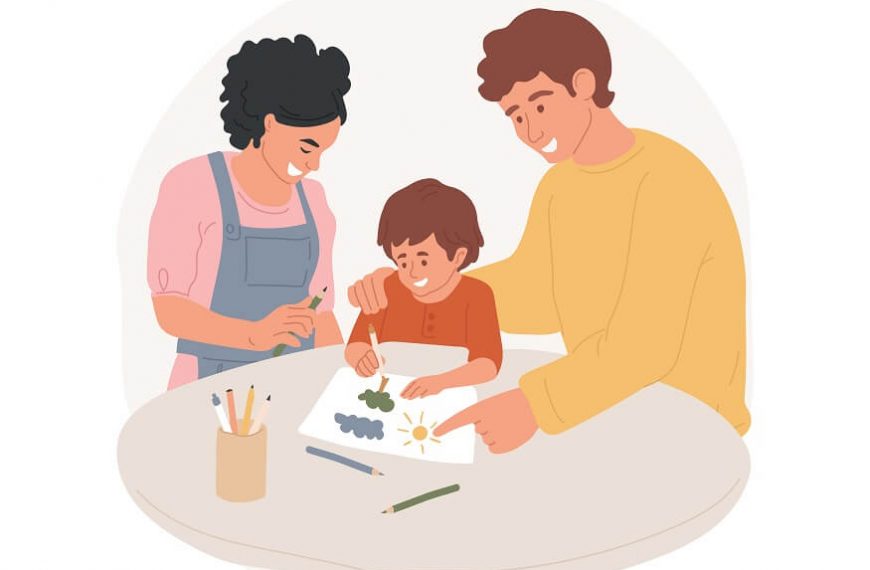Learning by Doing: Importance, Benefits & How-to
What is learning by doing?
Learning by doing means you know what you are doing. It means you know while doing something. You need more than just watching videos or reading books to be a good cook. The expertise comes from practicing in the kitchen, trying different ingredients, and gaining hands-on experience. Learning by doing is essential and helpful for learning practical things because you get to apply what you learn directly, which helps you understand.
When someone wants to learn practical things, they must use the learning-by-doing approach—learning by doing leads to a more profound understanding of the subject, providing individuals with in-depth knowledge and experience. Remember, children learn by doing.
Benefits of learning by doing:
- It’s a memory of a lifetime: One great thing about learning by doing the method for kids is that it’s more fun and easy to remember than just listening or reading. When kids actively participate and take part in activities, they are less likely to get bored or forget what they learn. Active learning makes things more exciting because they have to do things themselves. It also helps kids feel more connected to their knowledge and why it matters—making it a memory of a lifetime. Another cool thing is that they can learn from their mistakes and find better ways to do something. This helps them understand things better and get better at different skills.
- Boosts creative thinking: Engaging in hands-on activities exposes individuals to real-life challenges, prompting them to think creatively to overcome them. Real problems lead to concrete solutions. Children naturally inclined towards creativity often make a mess while exploring, allowing them to develop their problem-solving skills through creative solutions. Consequently, children learn through practical experiences.
- It involves all 5 senses: In learning, kids do different activities. They use their senses like touching, seeing, hearing, smelling, and sometimes tasting. When their brains get information from all these senses, they remember things better. So, when kids learn by doing things themselves, they recognize them longer than just memorizing things. Their brains make more robust connections when they use many senses together. It helps them understand things more deeply and remember them well. For instance, when children learn how to set up a camp tent by doing it themselves, they have a great time and learn more quickly and retain the knowledge for a lifetime.
- It teaches the value of teamwork: When discussing the importance of learning by doing for students, we must remember that learning by doing imparts the value of group activities to children. It enables them to develop leadership qualities and understand the significance of teamwork. When engaged in challenging tasks, they learn to rely on and trust one another. This fosters collaboration and cooperation, as they realize that working together yields better results than working alone. By actively participating and experiencing the dynamics of teamwork, children grasp the importance of collective effort and how it contributes to achieving common goals. Therefore, learning through hands-on experiences imparts knowledge and instills valuable social and interpersonal skills essential for personal and professional growth.
How to get started learning by doing?
Here are five ways to make learning more active and engaging:
- The first way to apply learning by doing is to take quizzes not about grades but to help your kids understand and remember the information better. These quizzes are like fun challenges that let them explore and learn from the content.
- The second way to teach learning by doing is to connect new things they learn with what they already know. For example, if they are learning about different types of fruits, think about how they are similar to other things they are familiar with, such as different colors or shapes. This helps them to remember and understand the characteristics of the fruits better.
- The third step in learning by doing is applying what you learn in real-life situations. If they are learning about plants, take them to a garden or park and help them identify different types of plants based on their features and characteristics. This hands-on experience will help them to understand how the information they have learned is relevant and applicable in the real world.
- The fourth way to incorporate learning by doing is to turn it into a game or puzzle. For example, if teaching them math concepts like addition, you can create an interactive math game where they can solve additional problems to unlock the next level or earn points. This engaging activity makes learning enjoyable and strengthens your understanding and recall of additional concepts.
- Another learning-by-doing method for kids is to connect what they learn to real-life situations. For example, suppose you’re teaching your kids about gravity. In that case, you can experiment by dropping different objects from various heights and observing how they fall to the ground. This hands-on activity allows them to experience and practically apply the principles of gravity directly. Engaging in such experiments, simulations, or projects can enhance their understanding of the subject and help them perceive its relevance in everyday life.
In conclusion, learning by doing is a practical approach that promotes more profound understanding, boosts creativity, engages all the senses, and teaches the value of teamwork. By incorporating quizzes, connecting new knowledge to prior knowledge, applying learning in real-life situations, turning learning into games or puzzles, and connecting to real-life contexts, students can benefit from active and engaging learning experiences.
















